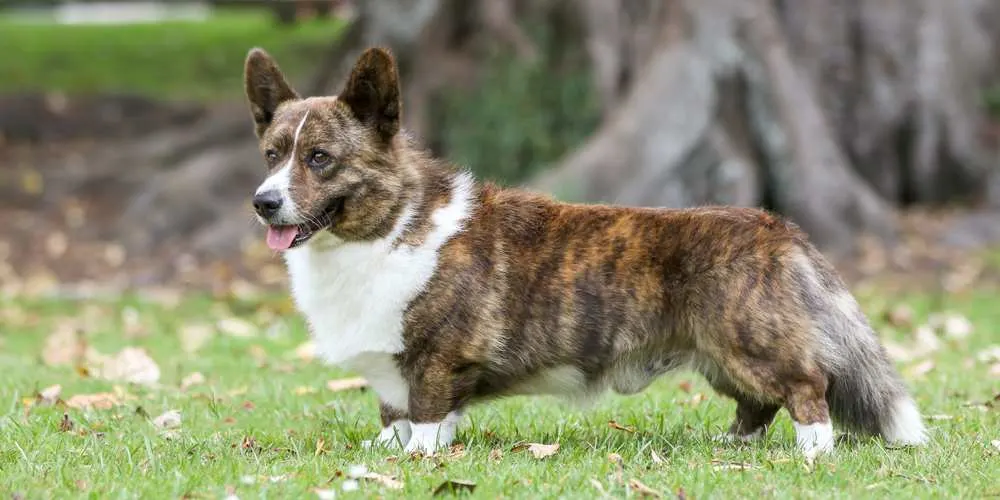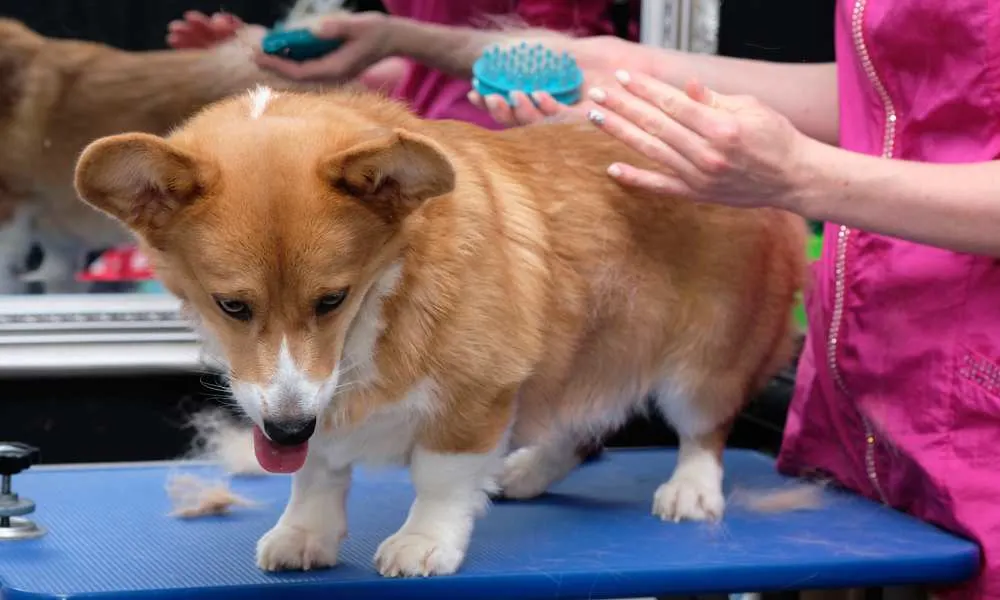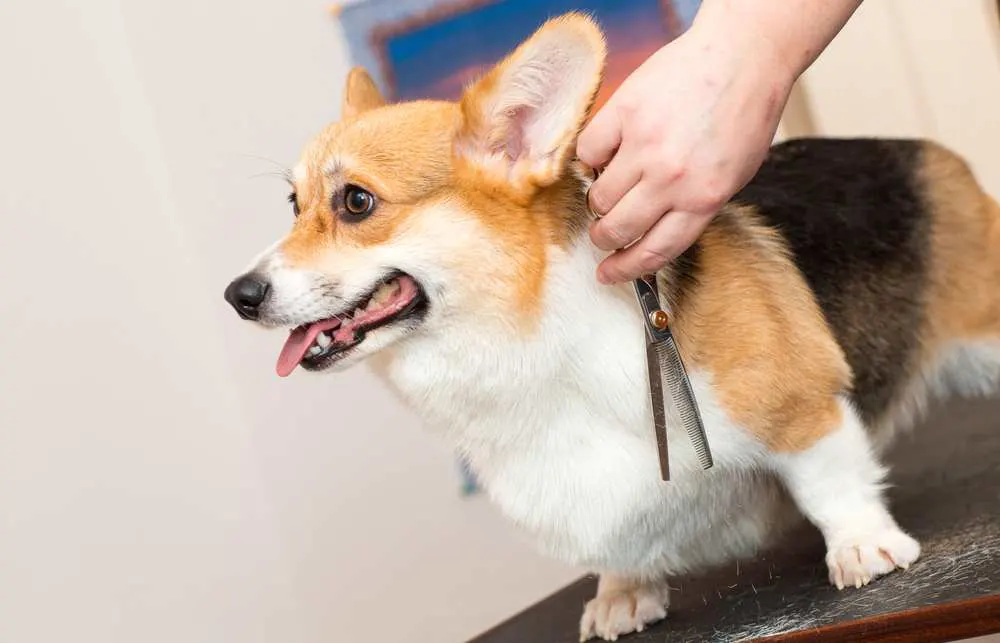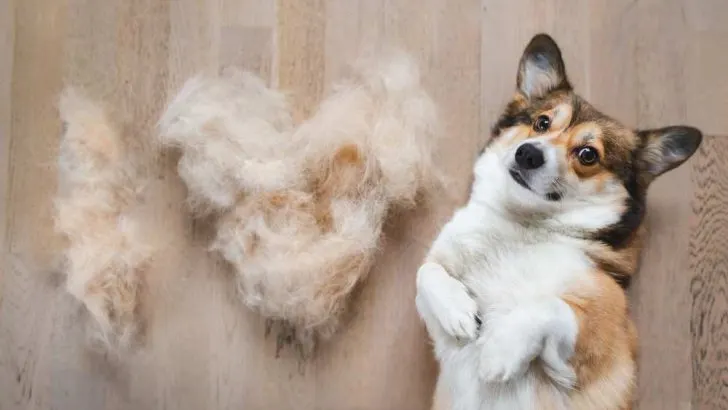Anyone who owns a dog (especially a corgi) knows how important it is to keep them fresh. Presuming you’re a corgi owner, you must’ve asked yourself how long does it take for corgi hair to grow back?
Maybe it’s because your pet got a bad haircut once, or maybe because you have decided to make it easier on your corgi in the hot summer and trimmed their hair just a little bit shorter than you should have.
Regardless of the reason for you posing this question, the answer needs to be given. In just a few words, I could tell you this much – it could be a matter of a couple of months.
There are things you should know regarding your pet’s fur and the process behind growing it back, as well as some tips and tricks on how to help your corgi overcome a bald spot or a shaven back from their last vet visit.
To find out all about those and to establish a better grasp on how this process really works, I highly suggest you keep reading and follow along through a journey that will teach you a lot about your pet.
Let’s go!

Does It Work The Same As With Human Hair?
Many people assume that dog hair works the same way as human hair does. While this is not completely wrong, it’s also not true. To better understand what has the biggest impact on your dog’s hair growth, you need to understand what is mandatory for your pet’s healthy fur in the first place.
The first and the biggest difference between dog hair and human hair is that human hair technically doesn’t have a limit on how long it can grow. On the other side, we all know that there are dog breeds that are considered short-haired and there are others that are considered long-haired.
People can nurture their hair and get it to some pretty extreme lengths, but dogs (once they reach their genetically determined hair length) stop growing hair longer than that exact length.
Corgis are considered a short-haired breed. They’re not the breed with the shortest hair (far from it) but as long as there are breeds such as Irish Setter, the corgi will be considered a short-haired dog.
Short-haired Breeds Vs. Long-haired Breeds
The biggest difference between those two is quite self-explanatory. Long-haired breeds have much longer fur that can go anywhere between 2.5 and 7 inches in length. These dogs shed more often because their body temperature is a little bit higher than the body temperature of a short-haired dog.
Once the hair of these dogs reaches the desired length (which is determined by their genetics) the hair stops growing. This also goes for the short-haired dogs, but it’s only logical that this happens much quicker for dogs such as corgis.
Shedding is also quite different for these two kinds of dogs. A common misconception is that short-haired breeds don’t actually shed. This is completely untrue and inaccurate. Short-haired dogs also shed but it’s much less noticeable than when you enter a house in spring where two huskies live.
When shedding, you probably won’t see any noticeable difference in your dog’s fur because the hair they shed is an undercoat which can hardly be seen by just looking at the dog. If you’ve come to this article fearing that your corgi will lose its fur while shedding, you can stop scrolling now because there’s no way your dog will lose all its hair in this process.
Some extreme cases such as alopecia might have some of the effects you fear so much, but those are a totally different topic that will be addressed later on in this article. So, as far as shedding goes, don’t be concerned for your dog’s fur. This is completely natural to them, and when the time comes they will regrow the hair they’ve lost in shedding right back.
Let’s get back to the topic of human hair and dog hair. Dogs have a specific genetic code that, unlike humans, doesn’t allow them to grow hair as long as they want, but it stops their hair from growing once it reaches the length that is in their DNA.
There are no known exceptions to this rule and pretty much all dog breeds have an expected hair length that is within some parameters.
For corgis, this varies quite a lot so I’m not comfortable with giving you any fixed numbers because it depends on the genetics. Usually, it’s around one and a half inches long, but depending if we’re talking Cardigan or Pembroke and their age it can be longer than that.
Learn More: Do Corgis Need To Get Haircuts?

Reasons Why Corgis Lose Their Hair
You can always look at these reasons from a million different angles. I highly suggest you separate the natural from the “unnatural” reasons for your corgi’s hair to fall off.
The only natural reason that corgis shed their fur naturally is the shedding season. This occurs twice a year. Once in spring and once in fall. During this period of time, you might see your dog’s coat becoming less dense and starting to look like it’s thinning.
This is nothing to get concerned about because this will happen with every dog and in every year of their life. There’s nothing natural you can do about this, and you shouldn’t do anything about it as a matter of fact. All dogs shed for a reason. Their hair becomes too dense and hot for them to handle, and that is the precise reason why they start to shed.
Nothing can or should be done about this as of stopping it. There are things you can do to make it easier on yourself to keep your living environment as clean as possible.
One thing I do recommend to any and every dog owner is to regularly brush their dog with special combs that are designed for getting the undercoat out. These combs are not too expensive and can help you quite a lot in shedding season.
If done properly and regularly this can almost completely negate the effects of your corgi shedding. When I first started combing my dog as I should, I noticed a big difference in loose hair in my apartment. You can also blowdry your corgi after giving it a bath besides towel drying it right after a bubbly bath.
These are my two most trusted techniques for preventing my dog’s hair to get everywhere. Trust me, if you start doing this regularly, you’ll realize soon enough how big of a game-changer this routine is.
Now let’s get to the unnatural occurrences where your dog might lose their hair. The first and most common one is a medical procedure for which your vet needs to shave a part of your corgi’s hair.
This is usually done by your vet before carrying out any kind of surgical procedure on your dog. Shaving the area that the operation is taking place is mandatory because hairs can cause some serious trouble during the said procedure.
This is one of the worst situations from hair growth because the razor with which the hair is removed cuts all of the hair off, so every single hair follicle needs to grow back in full length. Usually, there is nothing you can do to drastically speed up this process because this is also the genetic-related time period that needs to pass.
Dogs are not used to growing back the full length of their fur, so it takes much more time to do so. This is what I meant when I said it could take a couple of months to see the hair in its full length. Usually, it takes around a month and a half, but for some dogs like corgis, it can also happen in a month or so.
The other unnatural situation is when your dog develops a disease such as alopecia. To be honest, alopecia is just a fancy word for “hair loss”.
| This isn’t the same as natural hair loss in humans, but the alopecia that humans can sometimes experience is exactly the same as the one that occurs when talking about dogs. One thing that you have to remember is that alopecia is often an indicator of a more serious condition that can not be seen without doing a thorough examination. |
So, regarding this, I highly suggest that if you see your dog losing its hair for no particular reason, that means that you should take your corgi to their vet as soon as possible to conduct some further examination to see if some other disease is posing a threat to your pet.
When alopecia is the reason behind your dog’s hair loss, you need to pay extra attention to the regrowing process that needs to take place. This is because alopecia also prevents the hair from growing back as long as you don’t treat it like you should.
Some anti-parasitic or anti-fungal medication might be useful in these kinds of situations because it can stop the alopecia and allow your dog to start going its hair back.
There are also some shampoos that can do the same thing, but the important thing to remember is that you shouldn’t use any of these medications on your dog before hearing a vet’s opinion.
Your dog might need 3 to 4 months to grow back the hair that has fallen out because of alopecia because the hair follicles that have been killed by the disease need some time to regenerate and start growing again.
Bold spots might need a bit less time to grow back because you won’t see them as wee when the regrowth process starts. When a spot is big and on a visible place like the back or the ribs, then it might take up to six months to regrow the hair fully.
I need to say that unfortunately there are some instances, although rare, where dogs (including corgis) can’t grow their fur back in the spots where alopecia has caused hair loss. This is when alopecia is related to some auto-immune diseases your dog might develop.

How To Treat Hair Loss In Corgis?
As I’ve mentioned before, there aren’t many things that you can do to prevent or stop them from losing hair in some conditions.
If the hair is cut for any reason at all, you can always try supplements such as fish oil that are proven to have some impact on the regrowth process.
There are some more supplements found in pet pharmacies or pet shops that claim they boost hair growth and regeneration, but I do not recommend giving them to your corgi if you haven’t checked their efficiency with someone who knows what they’re talking about (like a vet).
Shampoos for hair growth aren’t something that you should rely on in these situations. They can help but you won’t see a big difference if you don’t use them to help your pet regrow the lost hair.

Summation
As you can see – there isn’t a simple answer to this question. Hair loss is not an easy thing to deal with for your dog, especially if there is an illness behind it. I suggest you keep your eye on your dog so you can react accordingly if you see some hair loss and take them to their vet.
Even regular vet checkups can prevent a serious problem from occurring because some blood analyses can show potential diseases and problems that can cause hair loss.
The amount of time that needs to pass for their hair to grow back is something that is relative, but overall this period probably won’t take longer than 6 to 7 months to regrow fully.
Read Also: Do Corgis Have Whiskers?

